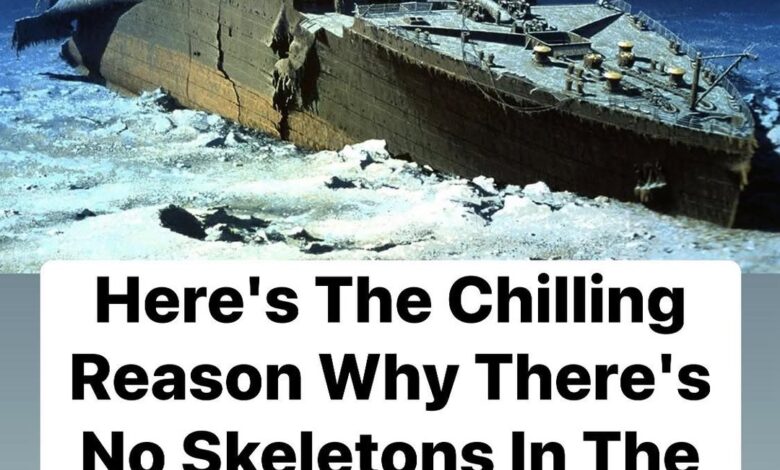Here’s The Chilling Reason Why There’s No Skeletons In The Titanic Wreckage

More than a century after the RMS Titanic vanished beneath the frigid waters of the North Atlantic, one haunting question still captivates historians, scientists, and the public: why have no human remains ever been found among the wreckage?
Since the ship’s discovery in 1985, explorers have made dozens of dives to the site, uncovering haunting details — chandeliers still hanging, shoes lying side by side, porcelain dishes scattered across the seabed — yet not a single trace of bone has been recovered. Now, science is shedding light on this enduring mystery.
The Titanic lies about 12,500 feet below the surface — an area of ocean so deep and cold that it crushes steel and slows decay, yet paradoxically, it destroys human remains. At that depth, the ship sits below what marine scientists call the “calcium carbonate compensation depth.” Beneath this invisible boundary, seawater becomes chemically aggressive, dissolving calcium-based materials such as shells and bones.
Dr. Robert Ballard, the oceanographer who led the expedition that first located the Titanic, explained that any skeletal remains would have vanished long ago. “Once scavengers remove the flesh, the bones are exposed to water that’s undersaturated in calcium carbonate,” he noted. “At that depth, they dissolve completely.”
It’s a process both scientific and sobering. More than 1,500 people lost their lives when the Titanic struck an iceberg on April 15, 1912, yet the ocean’s chemistry ensures that their final resting place holds no visible remains. Over time, currents, pressure, and scavenging organisms consumed or dispersed every trace of organic material.
Filmmaker James Cameron — who has visited the wreck more than 30 times — once said, “We’ve come across clothing and even pairs of shoes — clear signs that people were once there. But I’ve never seen human remains.”
What endures, then, are only ghostly outlines: shoes, coats, jewelry — objects that hint at the people who once wore them. Each item rests in eerie silence, preserved by cold darkness, serving as a memorial to the passengers and crew whose stories the sea itself has claimed.